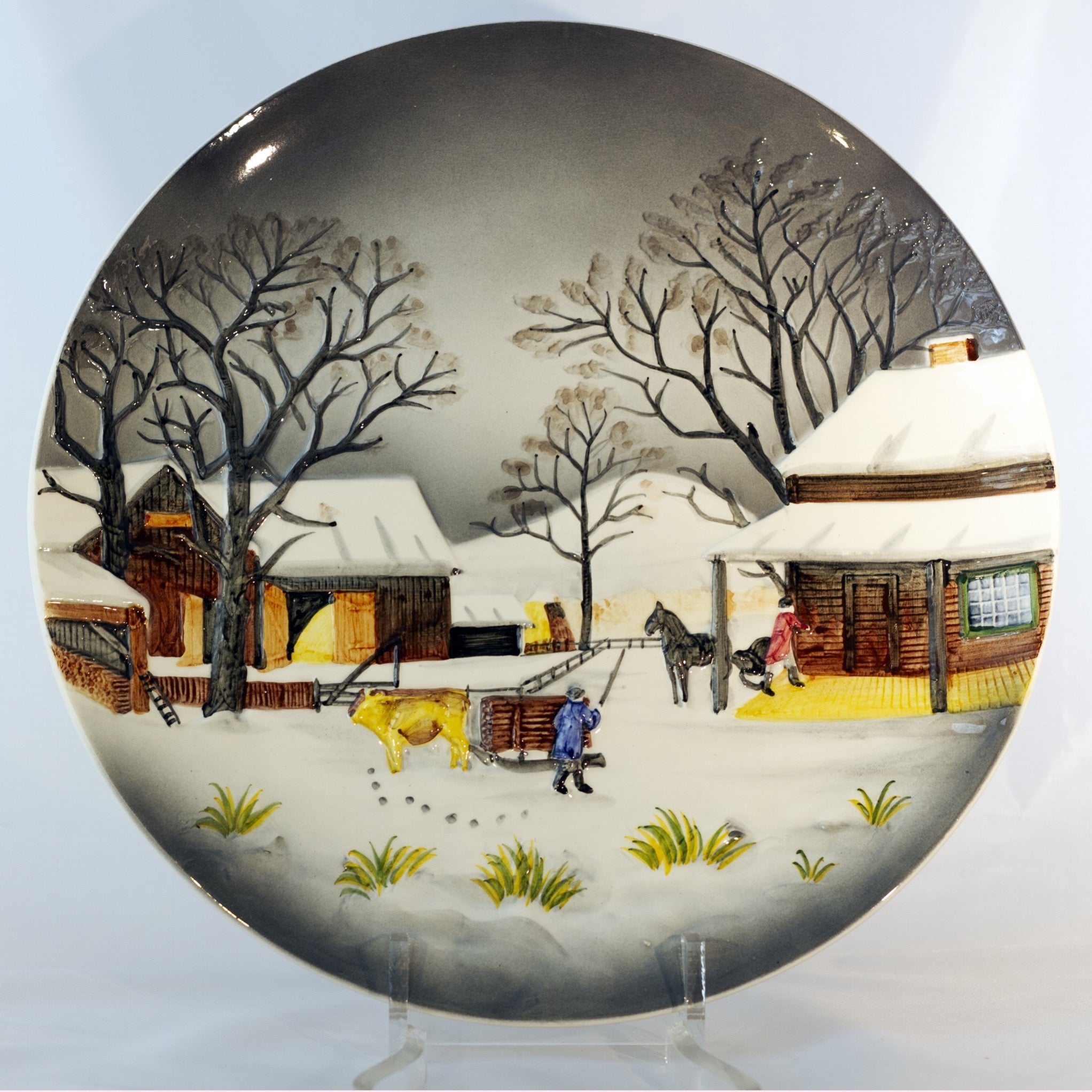Decorative plates from Western Germany are more than just functional items; they are a celebration of art, culture, and nostalgia. In this comprehensive guide, we will take a deep dive into the world of these exquisite pieces, discussing their history, craftsmanship, and how to incorporate them into modern decor.
The History of Decorative Plates in Western Germany
The tradition of decorative plate-making in Western Germany began in the mid-20th century, with various factories producing unique designs that captured the essence of German artistry. As a collector and enthusiast, I’ve discovered that these plates often tell a story, reflecting the cultural nuances of the time.
The Rise of Porcelain Production
After World War II, Western Germany experienced a surge in porcelain production as manufacturers sought to revive traditional crafts. This period saw the emergence of companies such as Villeroy & Boch, Rosenthal, and Meissen, which crafted some of the most beautiful decorative plates.
Key Features of Western German Plates
- Artistic Designs: Plates often feature intricate hand-painted designs.
- Quality Materials: Made from high-quality porcelain and ceramics.
- Limited Editions: Many plates are produced in limited quantities, enhancing their collectibility.
Understanding the Craftsmanship
The craftsmanship behind these decorative plates is what sets them apart. I’ve had the pleasure of visiting some local studios and witnessing craftsmen at work, which added a personal touch to my collection journey.
The Process of Making Decorative Plates
Creating a decorative plate involves several steps, which include:
| Step | Description |
|---|---|
| Clay Preparation | The clay is prepared and shaped into plates. |
| Firing | The plates are fired in a kiln to harden. |
| Decoration | Plates are hand-painted or decorated using various techniques. |
| Final Firing | A second firing ensures the decoration adheres to the plate. |
Popular Decorative Plate Manufacturers
Some notable names in Western German decorative plate production include:
- Villeroy & Boch: Known for its elegant designs and high quality.
- Rosenthal: Offers modern and classic styles.
- Hutschenreuther: Famous for its intricately detailed patterns.
Collecting Decorative Plates: Tips and Techniques
As a passionate collector, I’ve learned a lot about finding and caring for decorative plates. Here are some tips to enhance your collection.
How to Start Your Collection
Starting a collection can be both exciting and overwhelming. Here’s a simple guide:
- Research: Understand what you like and the types of plates available.
- Set a Budget: Determine how much you’re willing to spend.
- Explore: Visit antique shops, flea markets, and online platforms.
- Network: Join collector groups to learn and share insights.
Caring for Your Decorative Plates
Maintaining the beauty of your decorative plates is crucial. Here are some essential care tips:
- Avoid Direct Sunlight: Keep them away from direct light to prevent fading.
- Gentle Cleaning: Use a soft cloth and mild soap for cleaning.
- Storage: Store plates upright and padded to avoid scratches.

Incorporating Western Germany Plates into Home Decor
Decorative plates can add a unique touch to your home. Here’s how to display them effectively.
Display Ideas for Decorative Plates
Here are some creative ways to display your collection:
- Plate Hangers: Use decorative plate hangers for walls.
- Plate Stands: Showcase them on shelves or tables.
- Shadow Boxes: Create a 3D effect with a shadow box display.
Creating a Gallery Wall
A gallery wall featuring decorative plates can serve as a stunning focal point. Consider the following steps:
- Choose a Theme: Select plates that share similar colors or motifs.
- Arrange on the Floor: Layout your design first before hanging.
- Hang at Eye Level: Ensure easy viewing and appreciation of your collection.

Pros and Cons of Collecting Decorative Plates
Like any hobby, collecting decorative plates comes with its own set of advantages and challenges. Here’s an overview:
Pros
- Artistic Value: They are beautiful pieces of art.
- Cultural Significance: Many plates reflect cultural stories and histories.
- Investment Potential: Some plates can appreciate in value over time.
Cons
- Fragility: Plates can be easily broken or chipped.
- Space Requirements: They need dedicated space for display or storage.
- Cost: Quality plates can be expensive to purchase.

Comparing Different Types of Decorative Plates
Table of Decorative Plate Types
| Type | Material | Typical Designs | Price Range |
|---|---|---|---|
| Porcelain | Fine porcelain | Floral patterns, landscapes | $20 – $300 |
| Ceramic | Earthenware | Abstract, geometric | $10 – $150 |
| Bone China | Bone china | Delicate floral, intricate designs | $30 – $500 |
FAQs about Decorative Plates from Western Germany
What are the most famous brands of decorative plates from Western Germany?
Some of the most renowned brands include Villeroy & Boch, Rosenthal, and Hutschenreuther, each known for their unique styles and high-quality craftsmanship.

Are decorative plates from Western Germany valuable?
The value of decorative plates can vary significantly based on their rarity, condition, and demand. Some plates can appreciate in value, making them a good investment.
Can decorative plates be used for serving food?
While many decorative plates can be used for serving, it’s important to check if they are food-safe, especially if they have intricate designs or gold trim.

How can I determine the age of my decorative plate?
Researching the manufacturer’s mark on the back can help identify the age. Some marks are exclusive to certain periods, which can aid in determining the date of production.